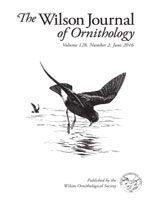The São Paulo Marsh Antwren (Formicivora paludicola) is a recently discovered species in the family Thamnophilidae that inhabits marshes in the vicinity of the São Paulo metropolitan region, which is the most populous area of South America and within the Brazilian Southeastern Atlantic Forest. This species should be considered “Critically Endangered” following IUCN criteria, as it has a total area of occupancy of only 1.42 km2, a sparse and fragmented distribution, low dispersal capacity, and has lost ~300 km2 of habitat in the last 200 years. F. paludicola was discovered on the verge of extinction, and virtually nothing is known about its natural history, breeding biology, and life history, hence compromising any conservation effort. By capturing and banding individuals from the three largest populations of São Paulo Marsh Antwrens, we provide the first assessment of the breeding period and molt cycles of F. paludicola. Our observations indicate breeding season is from October to February, and the species follows the Complex Basic molt strategy, with a partial pre-formative molt. F. paludicola also shows morphological sexual dimorphism, with males slightly larger than females.
How to translate text using browser tools
30 June 2016
Remarks on the Natural History of São Paulo Marsh Antwren (Formicivora paludicola)
Glaucia Del-Rio,
Luís Fábio Silveira
ACCESS THE FULL ARTICLE

The Wilson Journal of Ornithology
Vol. 128 • No. 2
June 2016
Vol. 128 • No. 2
June 2016
banding
breeding period
conservation
molt cycle
sexual dimorphism




